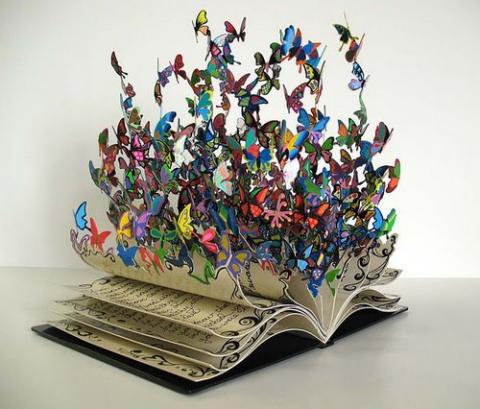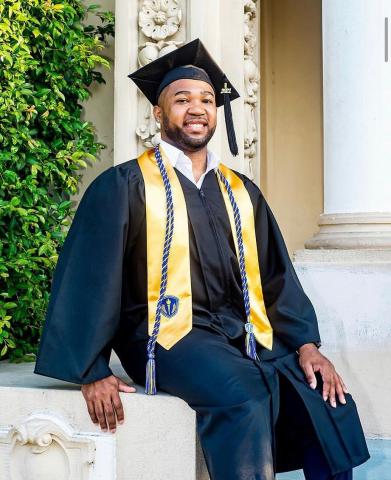Why Teach?
Apr 29,2016
To Teach is To Learn
It was only when I saw Mrs. Wendland, my second grade teacher, when my feelings of love and passion for learning came flooding back into my life. In that moment, my future seemed as clear as day; I wanted to foster those same feelings that I felt with her into my own classroom of students. I was known to be the quiet child in class. I didn’t raise my hand, ask questions, or really have the guts to speak up and make friends. Everyone was too timid to talk to me because I never talked. My teacher showed me what I am good at; she twisted my arm one day in class to step outside my bubble and read one of my poems in front of the class. Even through my nerves, the class loved my poem! All it took was a little push from someone to get me out of my social shell. I made friends, learned to write well, and learn to tell time all because of one teacher. It took one teacher to help me feel wanted and show me that I am actually smart. Mrs. Wendland is who I have to thank for helping me decide why I want to teach. That’s when I knew the path I needed to take was teaching for three reasons: 1) Bring the best out in people, and help others 2) Be the teacher I’ve always wanted. 3) Feed my hunger to learn.
The main reason I want to teach is to guide students to exploring their inner grit. I want to nurture that feeling of self-worth to my students; show them their strength of character. No student should feel the way I did in school; timid and scared to be wrong. It’s a fear that diminishes your hunger for knowledge. For this reason I want to teach elementary school, fifth grade, because I feel that is a vital time in a child’s life where they prepare the journey in searching and learning who they are. Middle school is filled with confusion and growth spurts for students. Teaching students just prior to that stage is where my desire and passion to teach guides me down my educator path.
I see the good in all the teachers I’ve ever had. Being the teacher that I have always wanted to have is so important to me. Understanding students desire to be taught the important material at an early age, so they are well prepared to move on to their next levels of education to prepare them for the reality of life that lies ahead of them is vital. Theorist Albert Bandura plays a significant part in a child’s behavior development. “Social learning, also known as modeling, is learning that results from seeing a model.”(Boyd, Bee, 35). Students learn a lot from modeling whether it’s adults and peers around them, or technology and media that surrounds our society today. Proper models for students are so vital to growth and development. It ties in with classical conditioning that theorist Ivan Pavlov discovered. “Adults are children’s models of behavior.” (Henninger, 364). I think a great teacher would become a positive model for their students. Putting Bandura’s idea of behavior development into my teaching would significantly improve a student’s relationship with me.
I re-discovered my hunger to learn by becoming more aware to the knowledge and cultures around me. It takes a lot of patience and passion to be a teacher. Not just that, but also organization, prior knowledge, and the urge to keeping learning. I see teaching as learning. I want to look past the biases and privileges that society has created of students, and teach them for whom they truly are as an individual. A study done by Gershenson done on white and black teachers on whether their high school students will graduate left me in disgust. It states facts from the study about how the two different races of teachers saw their students. “White and other non-black teachers were 12 percentage points more likely than black teachers to predict black students wouldn’t finish high school.” There percentage isn’t as significant of a difference as I would have guessed. I want to recognize and build on my student’s strengths based on who they are, not just where they come from.
Being in constant awareness of my profession and new techniques that become available to teaching can only better me as a teacher and an individual. I want to teach with an educational philosophy of existentialism, with a twist of progressivism. That way not only with students learn from me, but also from their peers and themselves. Students will learn to think for themselves. I want to teach a student-centered classroom where knowledge is being tested through self-discipline and choice-making.
In conclusion, my past experiences as a student have influenced me why I want to teach. Bringing the best out of my students, like my second grade teacher had done for me is my main reason to teach. Being a teacher that I have always wanted to have will help me by taking little bits of my the past teachers and developing my model teacher to teach and learn from. Finally, feeding my hunger to learn as a continuous student of life can only excel me as an individual and teacher. I’ve learned from my past experiences the underlying message of why I want to teach, and my new experiences that will motivate me to keep teaching and learning.
My goal as an educator is to highlight my strengths, knowledge, and passion that make me an efficient addition to any teaching team. To teach is to learn, and to learn is something no one can take away from you.
Bibliography
Boyd, Denise Roberts., and Helen L. Bee. The Growing Child. Boston: Allyn & Bacon, 2010. Print.
Henniger, Michael L. Teaching Young Children: An Introduction. 5th ed. Upper Saddle River, NJ: Pearson Education, 1999. Print.





